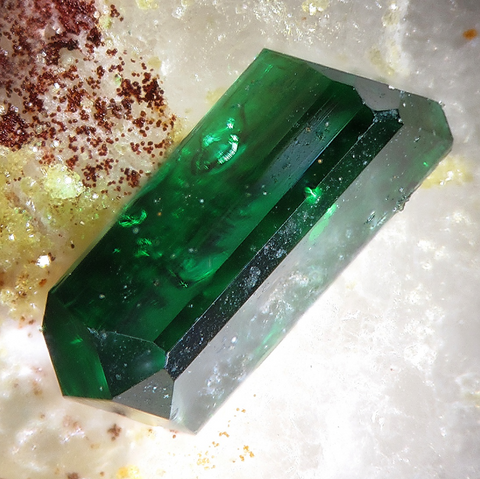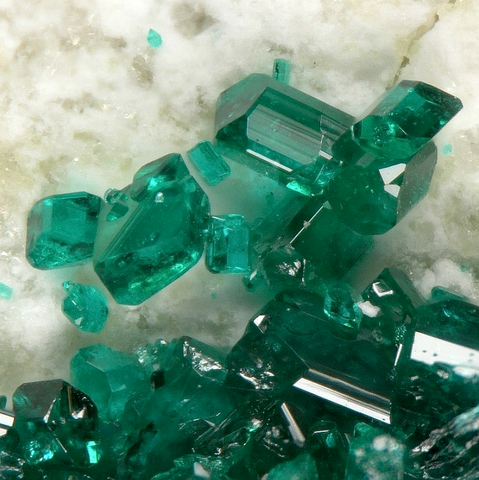ANTLERITE
Class : Sulphates, chromates, molybdates
Subclass : Anhydrous sulfates
Crystal System : Orthorhombic
Chemistry : Cu3SO4(OH)4
Rarity : Rare
Antlerite is a secondary sulphate present in the oxidation zones of copper deposits in a desert climate. It takes its name from its place of discovery : the Antler mine (Arizona). It occurs as stocky, often thick tabular crystals, as friable aggregates of needle-like to fibrous crystals, or as banded fibrous masses. Its emerald green to blackish green color is more reminiscent of brochantite or atacamite than malachite, although confusion is possible and probably common. It is a mineral that forms rapidly, often on a base of sulphides, but disappears just as quickly by transformation into brochantite, which is more stable. Despite this ephemeral character, antlerite provided an essential part of the copper ore in the great Chilean mine of Chuquicamata, the largest copper mine in the world.
Main photo : Antlerite from Blanchard Mine, New Mexico, USA © Ray Demark
Antlerite in the World
Photo on the right : Crozet antlerite, Loire, France © Yannick Vessely
Twinning
No known twins for this mineral species.
Fakes and treatments
No fake recorded for this mineral species, but often confused with brochantite, atacamite or malachite.
Hardness : 3.5
Density : 3.88
Fracture : Conchoidal
Trace : Pale green
TP : Translucent to transparent
RI : 1.726 to 1.789
Birefringence : 0.063
Optical character : Biaxial +
Pleochroism : Visible
Fluorescence : None
Solubility : Sulfuric acid
Magnetism : None
Radioactivity : None






